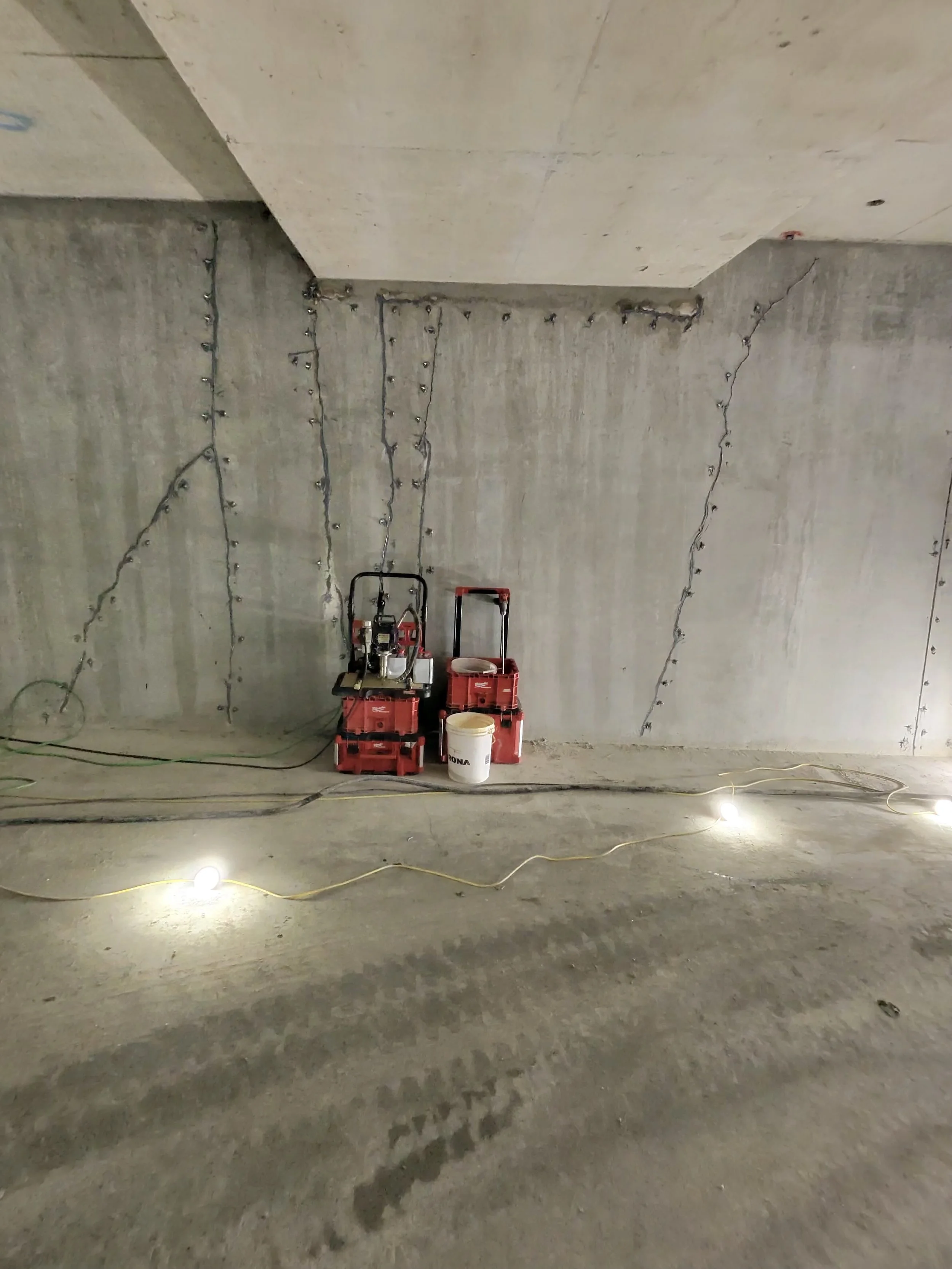
Our services for Civil and Road maintenance
-

Concrete sealing and injection for bridges and highways
Injection: The liquid polyurethane resin is injected under pressure into the concrete cracks using specialized equipment and ports.
Reaction & Expansion: The most common formulations are hydro-active, meaning the resin chemically reacts upon contact with water or moisture present in the crack. This reaction causes the polyurethane to expand rapidly into a dense foam or solid material.
Sealing: The expanding foam/solid completely fills the crack and any associated voids, creating a tight, watertight seal throughout the structure's thickness.
Reducing Early Decay
This process significantly reduces early concrete decay in bridge elements by:
Water Blockage: The primary cause of concrete decay is water infiltration, which carries chlorides (from de-icing salts) down to the steel reinforcing bars (rebar). The PU seal completely blocks the pathways for water, halting this destructive process.
Corrosion Prevention: By preventing water and chlorides from reaching the rebar, the polyurethane resin stops the initiation or progression of rebar corrosion (rust), which is a major cause of concrete spalling and structural failure.
Flexibility: Unlike rigid materials (like some epoxies), cured polyurethane is often flexible and elastic. This allows the repair to accommodate minor structural movement (caused by temperature changes, traffic vibrations, or settlement) without cracking or losing its seal, ensuring the repair lasts longer.
In essence, polyurethane resin injection acts as a highly effective, fast-curing sealant to protect the concrete matrix and the internal steel from moisture, which is the key driver of early deterioration.
-

Benefits of Polyurea coatings on Bridges
Polyurea coatings are highly useful for bridges and highway maintenance contractors primarily due to their unmatched speed, durability, and resilience. As a high-performance protective barrier, polyurea is applied using a simple plural component rapid spray process, with an incredibly fast curing time that allows the bridge or highway to be traffic-ready in as little as 24 hours or less. This rapid turnaround minimizes costly delays and road closures, which is critical for infrastructure projects with limited timelines. Furthermore, polyurea systems are resistant to abrasion, chemicals (like de-icing salts), and maintain excellent flexibility across wide temperature variations, ensuring the coating seamlessly bridges cracks and protects the concrete deck from corrosion for 30 years or more, significantly reducing the need for costly long-term maintenance and rehabilitation.
-

Polyjacking: Structural Stabilization for Highways and Bridges
Polyjacking (polyurethane concrete lifting) offers municipalities and highway maintenance contractors an ideal solution for structural stabilization beneath roadways and bridge approaches. This method is the preferred choice of engineers and Departments of Transportation due to its efficiency, strength, and minimal impact.
Benefits for Infrastructure:
Rapid Return to Service: The polyurethane foam hardens quickly, reaching 90% strength in as little as 15 minutes. This allows lifted highway slabs to be driven on almost immediately, drastically minimizing construction time and traffic disruption.
Lightweight and Durable: Unlike traditional mudjacking, which adds significant weight (up to 100 lbs per cubic foot), polyurethane foam is extremely lightweight (around 2–4 lbs per cubic foot). This prevents overburdening existing weak subsoil and limits future settlement.
Soil Stabilization: The injected polymer simultaneously fills voids, densifies loose soils, and restores the load-bearing capacity beneath the pavement.
Cost-Effective: Polyjacking avoids the costly process of demolition and concrete replacement, making it a much more affordable and less labor-intensive solution for restoring bridge approaches and roadways to their proper grade.
Non-Invasive: The process only requires small injection holes (around 5/8" wide), preserving the integrity of the existing structure and minimizing construction debris.

